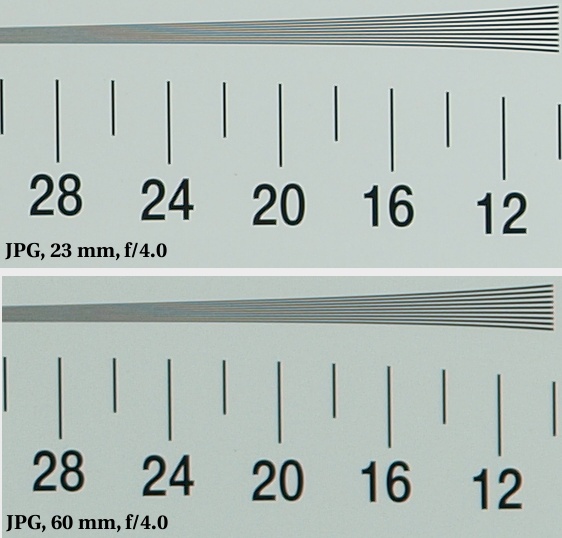Olympus Zuiko Digital ED 12-60 mm f/2.8-4.0 SWD
4. Image resolution
When we want to compare the lens to devices from other systems we must remember that the Olympus lenses’ results are, because of the matrix, almost 20% higher than the results reached on a 8-megapixel Canon 20D sensor. When a Zuiko lens reaches a result of 50 lpmm it means that cooperating with the Canon camera it would have only about 42 lpmm.
Let’s get down to the facts and look at the picture below which shows us the frame centre performance based on the strength of RAW files.
Please Support UsIf you enjoy our reviews and articles, and you want us to continue our work please, support our website by donating through PayPal. The funds are going to be used for paying our editorial team, renting servers, and equipping our testing studio; only that way we will be able to continue providing you interesting content for free. |
- - - - - - - - - - - - - - - - - - - - - - - - - - - - - - - - - - - - - - - - - - - - - - - -

The results are excellent at 12 and 23 mm, no matter what aperture value we take. Even the maximum relative aperture gives outstandingly sharp images. Little difficulties occur in the range of 40-60 mm. Here an outstanding sharpness can be provided only by stopping down by one stop. You can notice the influence of optical aberrations at the maximum aperture but the resolution level, although not outstanding anymore, still can be described as very good.
Taking into account the wide focal lengths range, the presence of a real wide angle and the fastness, the frame centre results are really worth our recognition!
How does the lens perform at the frame edge? Let’s have a look at the picture below.

The only thing that might make us feel a bit dissatisfied is the maximum aperture performance. In fact at all focal lengths the results are at the level of 35 lpmm which is deemed to be a decency border for the Olympus – only above it we can start talking about a good quality picture. On stopping down by one stop the MTF50 values significantly exceed the level of 40 lpmm and, although they don’t reach such outstanding results as in the frame centre, we can describe the performance as very good.
To sum up, the ZD 12-60 mm really fares well in this category taking into account its parameters. It’s unrealistic to expect that a lens with such a wide focal lengths range (5x zoom ratio) will have results similar to those of prime lenses throughout its whole range, in the frame centre as well as on its borders.







